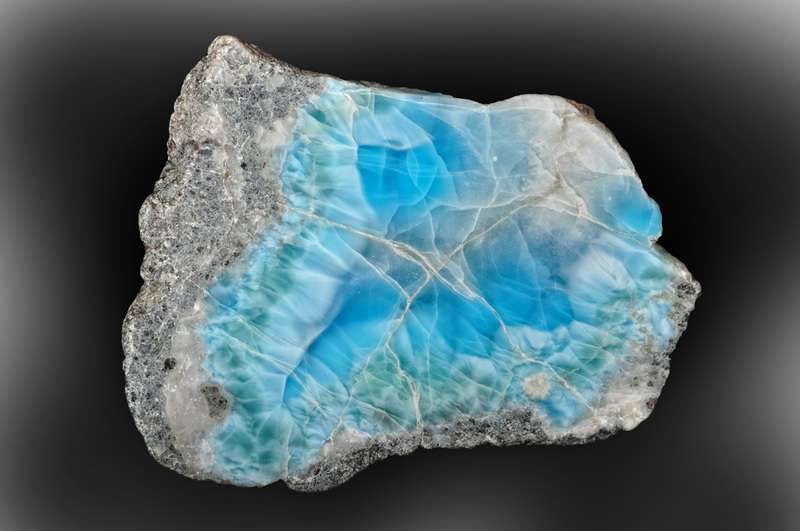
Appearance
The attractive blue hue of larimar, which ranges from pale blue to deep turquoise, is well-known. One stone can have a range of colors, creating stunning gradients and patterns. Usually, larimar ranges from translucent to opaque. Different stones have different levels of transparency; some include impurities or cloudiness, while others show a high degree of clarity. Larimar has an acicular or fibrous crystal structure and is a member of the pectolite mineral group. It has a distinct appearance since it forms in radial clusters and aggregates.
Geographical Distribution
While small amounts have been found in other places of the world, such as the Bahamas, the United States, and several European countries, larimar is mostly found in the Dominican Republic’s province of Barahona. Still, the Dominican Republic continues to be the main supplier of fine Larimar.
History
Larimar was originally found in 1916, but it wasn’t until Miguel Méndez, a Peace Corps volunteer, rediscovered it on Dominican Republic coasts in the 1970s that the gemstone attracted considerable attention. The gemstone’s association with the sea is highlighted by the name “Larimar,” which is a combination of the Spanish word for sea, “mar,” and the name of Méndez’s daughter, Larissa.
Metaphysical Properties
It has associations to the throat, heart, third eye, and crown chakras and is said by some to facilitate communication. Lorimar is used in many physical, mental, and spiritual healing methods by alternative and holistic healers.

Chemical Composition
Larimar is composed of sodium (Na), calcium (Ca), silicon (Si), oxygen (O), and hydroxide (OH) ions, as shown by its chemical formula, NaCa2Si3O8(OH). It is a member of the inosilicate group of minerals, which is distinguished by a single chain of silicate tetrahedra that are connected.
Uses
The following are some common uses and applications for larimar:
- Jewelry: Larimar is cut and polished into a wide variety of shapes and sizes and used extensively in jewelry. It frequently serves as the focal point of necklaces, bracelets, earrings, pendants, and rings. Larimar jewelry is prized for its eye-catching patterns, vivid blue hue, and general aesthetic appeal.
- Cabochons and Beads: A common shape for larimar is a smooth, domed cabochon, which is used in jewelry settings. You can set these cabochons into pendants, rings, and other jewelry. Because of their vivid color and distinctive patterns, larimar beads are also quite popular and are used in bracelets and necklaces.
- Carvings and Sculptures: Larimar is quite soft, so it’s easy to carve and shape into complex patterns. Larimar is used by sculptors and craftspeople to make statues, figurines, and ornamental items. Collectors and art enthusiasts value these carvings because they highlight the brilliance of the gemstone.
- Home Decor: Many items of home décor, such as ornamental bowls, vases, and tabletop decorations, are made using larimar. Because of its vivid blue hue, interior design is given an element of refinement and organic beauty.
Table





